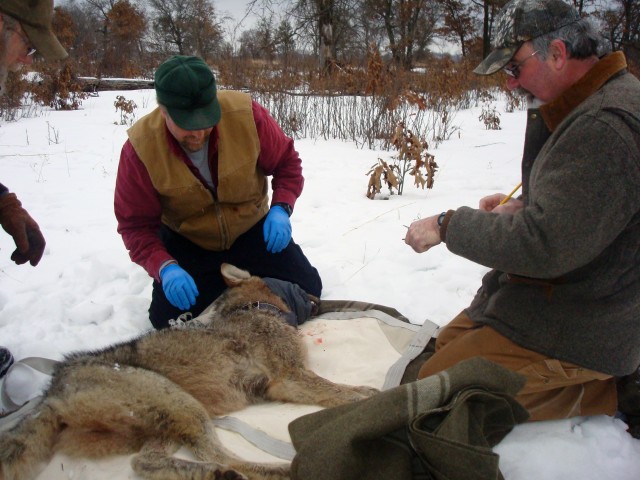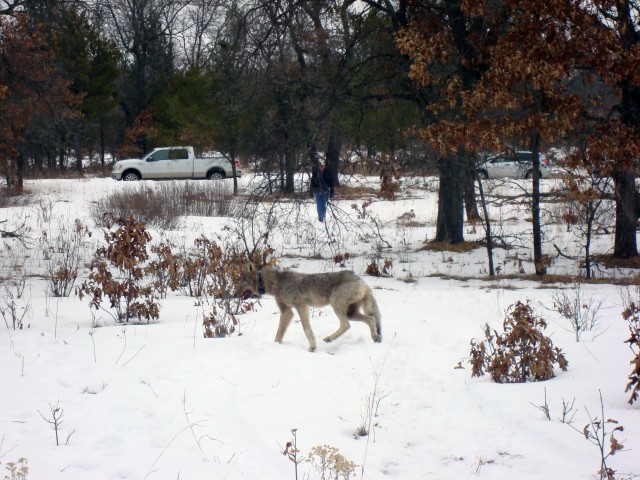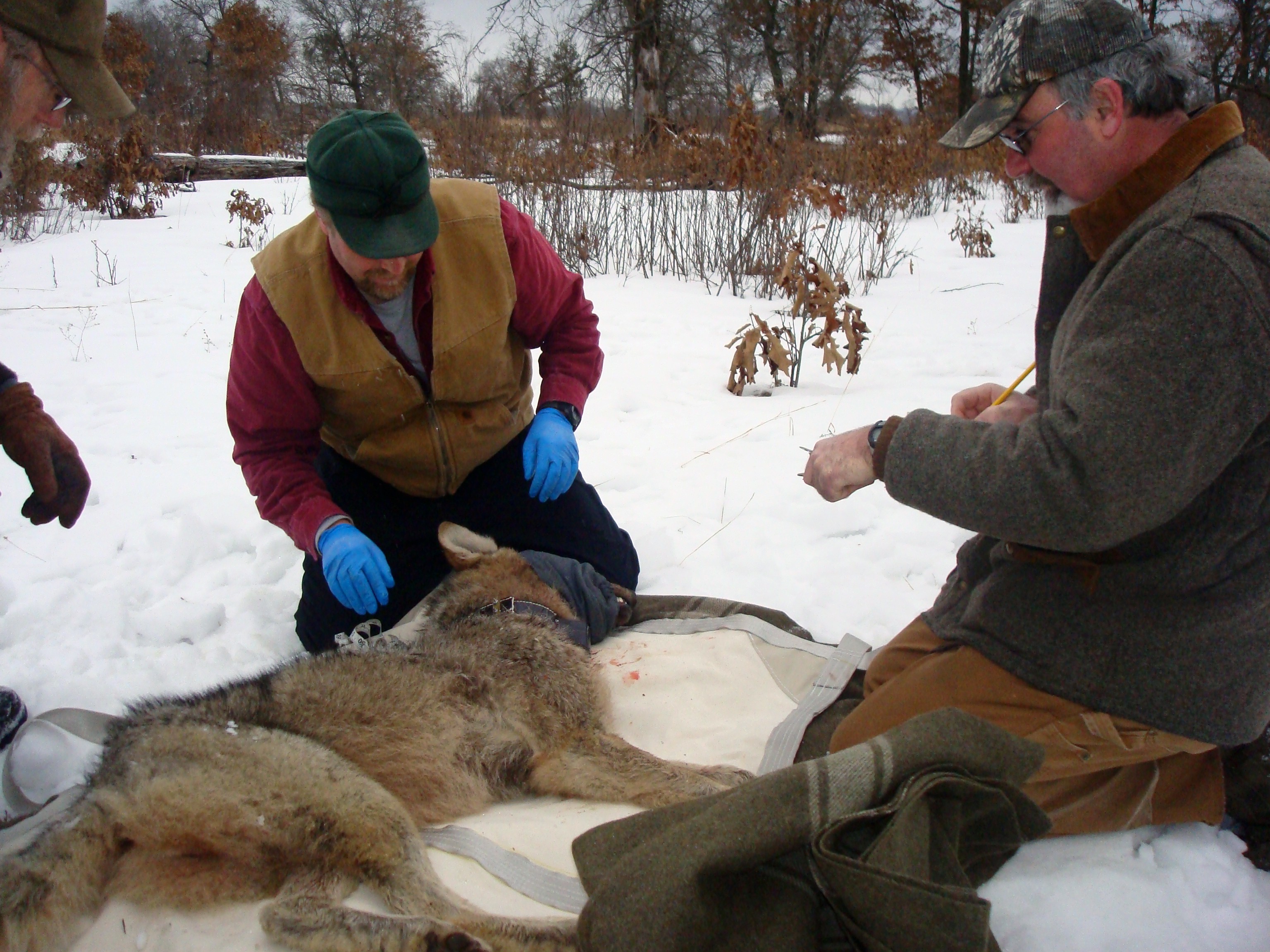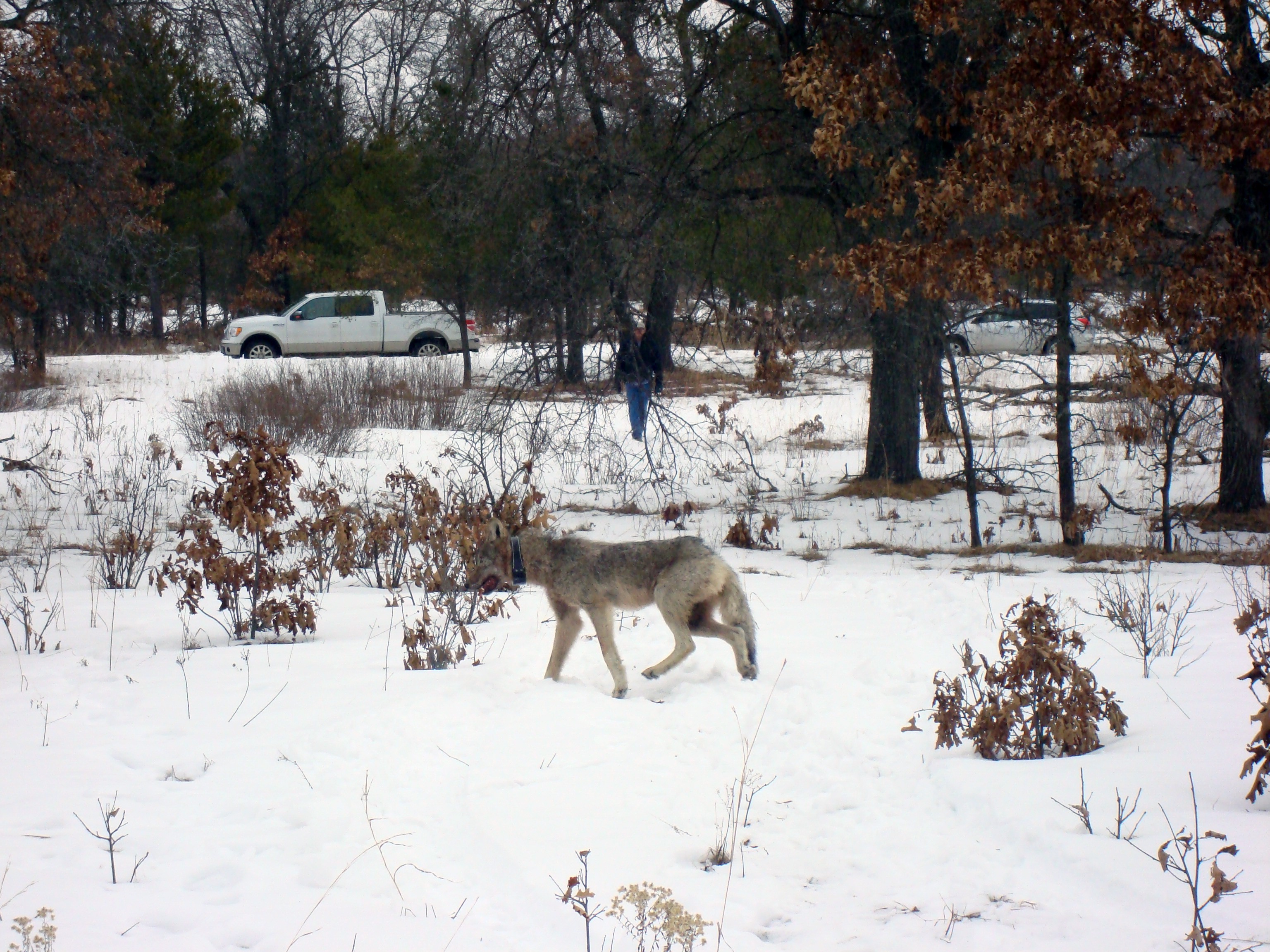FORT McCOY, Wis. -- The trapping of a 65-pound, yearling female gray wolf on Fort McCoy's South Post should yield more information about the wolf pack at Fort McCoy and help installation management of the species, said Tim Wilder. Wilder is the endangered species program manager for the installation's Natural Resources Branch (NRB).
"Although wolves have resided on North Post since 1999, a pack only recently is thought to have formed on South Post in January 2010," Wilder said.
A telemetry collar was attached to the trapped wolf before she was released at a remote South Post site.
"Because the female is part of the pack and will travel with the pack, the telemetry collar will provide information on home-range size, approximate den location, wolf movement/behavior in relationship to military training activities, and mortality information when this wolf dies," Wilder said. "The Wisconsin Department of Natural Resources (WDNR) funded the trapping effort and, along with installation biologists, will assist in monitoring activities."
The WDNR contracted with the U.S. Department of Agriculture (USDA) to actually trap the wolf, which was named Grace.
The USDA Wildlife Services used a snare to capture the wolf, which was in good health. Wilder said he was impressed with the thoroughness of the steps taken to ensure the wolf wasn't injured and was released "no worse for the wear" back to her home environment. He added that without the cooperative effort between the three agencies, Fort McCoy would not have been able to have the telemetry collar placed on the wolf.
"This female wolf is only the second one captured and collared at Fort McCoy in the 11 years the mammals have resided on the installation," he said.
Another female wolf was caught inadvertently in a coyote trap in December 2002. The WDNR placed a telemetry collar on this wolf, and the wolf was monitored until her death in November 2004.
"Telemetry monitoring provides excellent information to help manage this species," Wilder said. Data collected on this collared wolf will help the installation augment data it collects during winter track surveys and summer howling surveys.
"Wolves are viewed as a controversial species, so having information on if or how far off the installation the packs' territory goes will help provide answers to questions that will likely be asked by surrounding landowners," he said.
Data collected on this wolf by installation natural resource personnel will be shared with the WDNR.
Wolves currently are listed as a federally endangered species, he said.
Several efforts have been made to remove them from that category in the past, but on each occasions they have subsequently been re-listed as endangered.
Wilder said if a future effort to remove wolves from the endangered species list is successful, the WDNR then would assume responsibility for managing the species.
The information the installation has about the species would be very valuable to help the WDNR perform that task.
Information gathered also will help Fort McCoy manage wolves by ensuring the new facilities it builds and the training it conducts are compatible with the wolves' land needs.
Wilder said, "To date, the wolves have been able to co-exist very well with the wide variety of activities occurring on the installation."
"There are many remote areas on the installation where, on any given day, humans rarely venture," Wilder said. Wolves in the North Post pack spend an inordinate amount of time within the impact area because few people enter this area, making it attractive to wolves.
"One controversial aspect of wolves is the fact that they prey on white-tailed deer, the most popular big game animal in Wisconsin," Wilder said. "Prior to 2010, only one pack of wolves resided on Fort McCoy and wolf numbers were low enough that they did not have a major impact on overall deer numbers," he said.
That could now be changing because at least two packs reside on Fort McCoy and wolf numbers are increasing, he said. If the WDNR decides it needs to enact management policies to control the wolf population in the future, Fort McCoy probably will coordinate their implementation on post, he said.
The original Fort McCoy wolf management plan was approved in 2005, he said.
A new five-year management plan currently is out for public and agency review and is expected to be finalized in the next couple of months.




Social Sharing